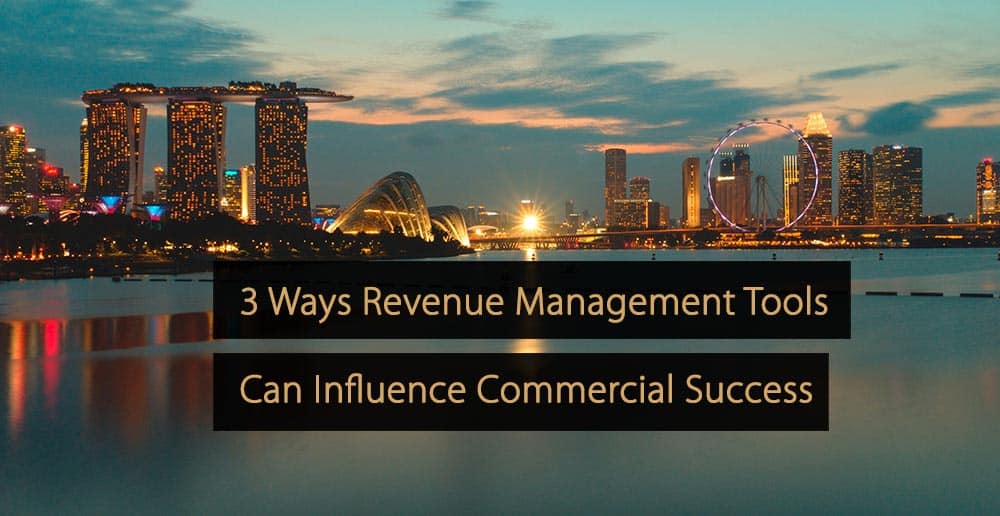Forecasting is never easy—but it gets a whole lot harder when someone asks you to “adjust” the numbers. If your General Manager (GM) pushes for a rosier picture than the data shows, how do you stay realistic without rocking the boat?
In this article, we’ll walk through how to handle the pressure, maintain integrity, and turn tricky conversations into alignment.
The Reality of Forecasting Pressure
Let’s be honest: every hotel wants to beat last year’s numbers. Forecasts are more than just predictions; they’re tied to budgets, targets, and expectations. But when your GM asks you to “revisit” a forecast because it looks too low, it’s not just about numbers—it’s about trust.
As Natalie Reiter, Director of Revenue Management Success at RoomPriceGenie, puts it:
“It’s not about inflating the forecast just to meet goals. It’s about starting with accuracy, so we know what we’re working with.”
You don’t need to be combative, but you need to be confident in your process and experience and ready to explain your reasoning.
Why Fixing the Forecast Isn’t the Fix
A forecast is only useful if it reflects reality. Inflating numbers to make things look better can have serious consequences:
- Overstaffing: Hiring too many people or prepping too much food for guests who won’t arrive.
- Pricing errors: Raising rates based on faulty expectations and losing bookings as a result.
- Misaligned strategies: Making decisions based on hopes, not facts.
Forecasts are a planning tool, not a performance report. If your forecast says you’ll miss the budget, that’s not failure—it’s early insight. It gives your team a chance to act.
Step 1: Ground Your Forecast in Data
Start with the facts. Make sure your forecast includes:
- Pickup pace: Are bookings coming in faster or slower than normal?
- On-the-books data: How do confirmed bookings compare to the same period last year?
- Market indicators: Are there fewer events, weather concerns, or economic changes affecting demand?
“If you’re forecasting demand as flat, and you have fewer drivers this year—like no concerts or no events—you need to explain that to your GM.” – Leslie Hoy, Sales and Revenue Manager North America, RoomPriceGenie
Tip: Use visual reports to communicate easily. Charts, pacing curves, and YoY comparisons speak louder than spreadsheets.
Step 2: Share the Story Behind the Numbers
When your GM pushes back on the forecast, it’s usually not because they don’t believe the data. More often, it’s because they’re concerned about what the numbers mean—for the business, the budget, and their own targets.
That’s your cue to step in as both analyst and storyteller.
Don’t just share the numbers—translate them into a narrative explaining what’s happening and why. Ground your story in facts and trends that offer clarity, not just caution.
For example:
- “We’re pacing behind because Easter has shifted into March this year, shortening the booking window for spring.“
- “Group business is lagging; our usual corporate bookings haven’t materialized yet, and the lead time is shorter than average.”
- “It’s not just us—pickup across the entire market is slower, which tells us this is a broader trend, not a performance issue.”
Framing your forecast with context helps your leadership understand that it’s not guesswork but strategic analysis. Forecasts don’t just predict—they explain. When you connect the dots between data and business reality, you don’t just report the numbers—you lead the conversation.
Step 3: Create a Plan, Not Just a Prediction
A forecast is only half the story. The real value lies in what you do with it.
If you want your leadership team to buy into the numbers, pair your forecast with a proactive plan. Instead of stopping at “Here’s what we expect,” move the conversation to “Here’s how we’re responding.”
Bring ideas to the table that show you’re observing trends and acting on them.
For example:
- “We’ve identified guests who stayed last March. We’ll launch a targeted campaign to bring them back.”
- “Let’s push weekend promos across OTAs and direct channels to stimulate short-term demand.”
- “We can adjust our rates slightly over the next two weeks and keep an eye on pickup to stay agile.”
This kind of thinking shifts the dynamic. You no longer defend the forecast; you own the outcome. Turn numbers into the next steps, and you’ll earn your General Manager’s trust while driving results.
Step 4: Educate and Align
Not everyone understands how forecasting works—and that’s okay. Not every GM, owner, or department head has a deep background in revenue management. So when someone pushes back on your numbers, it’s not always a challenge to your skills. More often, it’s a gap in understanding. That’s your cue not to get defensive but to step up as the guide.
Start by reframing what a forecast actually is. It’s not a goal. It’s not a guess. And it’s definitely not wishful thinking. A forecast is a strategic planning tool. A way to map out what’s likely to happen so you can make the best decisions before it does.
Forecast accuracy matters because it gives you options. When you spot a shortfall early, you can still shift strategies by tweaking your pricing, launching a campaign, or opening up to new segments. But if you inflate your forecast just to make it look good on paper? You’re flying blind. You won’t spot trouble until it’s too late to respond. And by then, you’re not missing your goals—you’re missing your chance to fix them.
If your forecast isn’t accurate, you’re not helping yourself. Without a plan, you’re just setting yourself up to miss the budget.
Helping your team understand this isn’t about schooling them but creating alignment. When everyone is on the same page about what the forecast is (and isn’t), they stop seeing it as a problem to fix and start seeing it as a tool to use. That’s when the real collaboration begins.
Step 5: Build Trust Over Time
If you consistently forecast realistically—and explain clearly—you’ll earn your GM’s trust. And soon, they won’t ask you to “fix” the forecast. They’ll ask, “What’s the forecast—and what can we do about it?”
Tips for long-term alignment:
- Share updates weekly, not just monthly.
- Include context, not just numbers.
- Celebrate when your accuracy improves.
Revenue Growth Takes Time, And That’s Okay
Revenue managers often feel the pressure to deliver big jumps fast. But the truth is great results don’t happen overnight and trying to force them can backfire.
As Thibault Catala, Founder & CEO at Catala Consulting, puts it in his LinkedIn post:
“Revenue management isn’t about quick fixes.
It’s about consistent decisions over time.
It’s about discipline.
I get it. There’s a lot of pressure from owners, from regional teams, even from yourself. You want to see the curve go up. Fast.
But in my experience, when GMs push for instant results, they end up with:
❌ Dropping prices too quickly
❌ Running heavy last-minute promotions
❌ Short-term wins that hurt long-term positioning.”
Chasing short-term wins through reactive pricing or heavy last-minute promotions might give you a temporary lift, but it can damage your long-term strategy. Thibault sums it up:
The best results I’ve seen?
✅ Clean, reliable data
✅ A pricing plan you stick to
✅ Teams that work together
✅ Constant testing
It’s not exciting at first.
But 3–6 months later, you realize you’ve moved the needle in a big way.”
Forecasting and revenue performance aren’t just numbers; they’re the outcome of strong foundations. So the next time someone asks why results aren’t immediate, remind them: “Some things just take time, and the wait is worth it.”
What to Do If You Still Get Pushback
You’ve done your homework, shared the numbers, and told the story behind the data. But despite your best efforts, your GM or leadership still insists on plugging in higher numbers, hoping optimism will somehow shift reality.
It happens. And when it does, you don’t have to compromise your credibility to keep the peace.
Instead, offer a practical solution: build two forecasts.
- The first is your “Realistic Forecast“—based on data, market trends, and your professional insights. This is the version you’ll use to guide actual strategy.
- The second is an “Aggressive Forecast“—more aspirational, reflecting leadership’s goals or expectations.
Label both clearly. Use them side-by-side. Track performance against each as the season unfolds.
This approach protects your integrity while giving decision-makers a sense of ownership. It shows that you’re listening, flexible, and willing to meet halfway—without compromising the accuracy of your planning or the trust in your numbers.
As a revenue manager, Leslie Hoy points out, “You can’t fix revenue by fixing the forecast.” But you can open the door to productive conversations by presenting honest, data-driven, and collaborative options.
Being asked to “fix” a forecast can feel uncomfortable. However, it’s also a chance to lead with clarity, insight, and strategy. Stay focused on the goal: understanding the future so you can shape it. With solid data, communication, and a solution-oriented mindset, you’ll turn even the most challenging conversations into results.
Free Guide: The Benefits of Revenue Management
By reading this guide, you will gain valuable insights into how revenue management impacts every department and learn how to implement pricing strategies that boost revenue, streamline operations, and improve guest experiences.
Click here to download the guide “The Benefits of Revenue Management”.
More Tips to Grow Your Business
Revfine.com is the leading knowledge platform for the hospitality and travel industry. Professionals use our insights, strategies, and actionable tips to get inspired, optimize revenue, innovate processes, and improve customer experience.Explore expert advice on management, marketing, revenue management, operations, software, and technology in our dedicated Hotel, Hospitality, and Travel & Tourism categories.







Leave A Comment